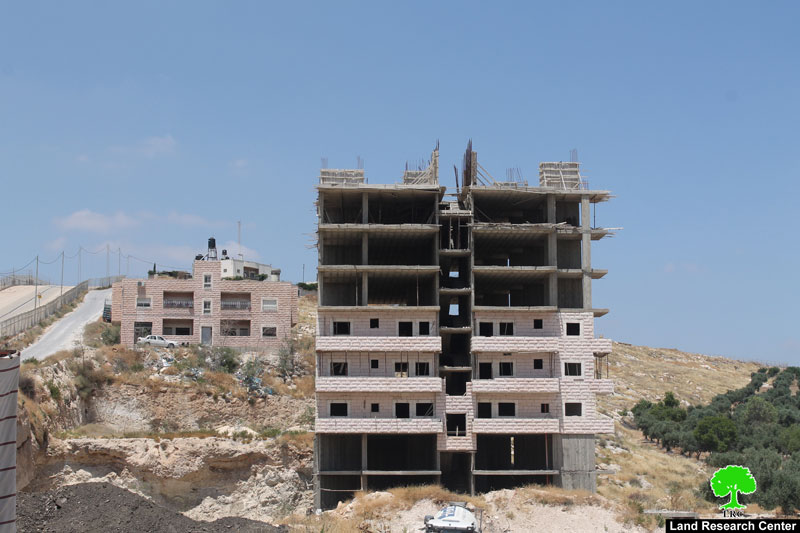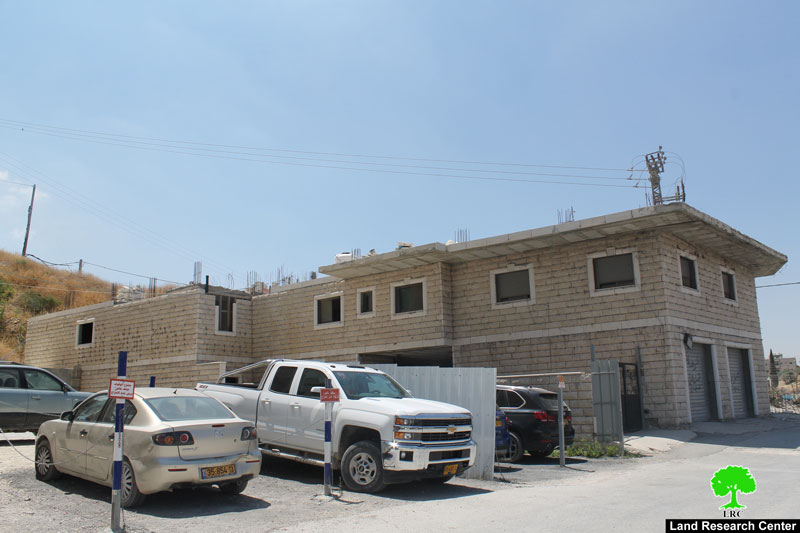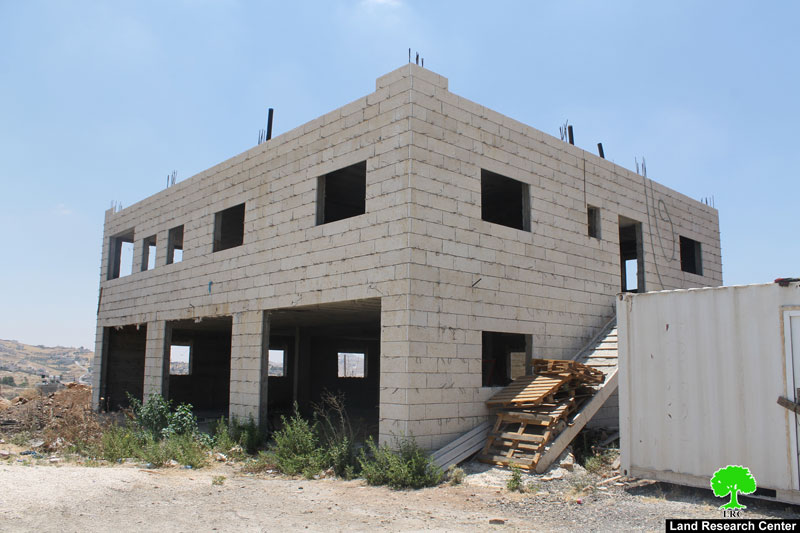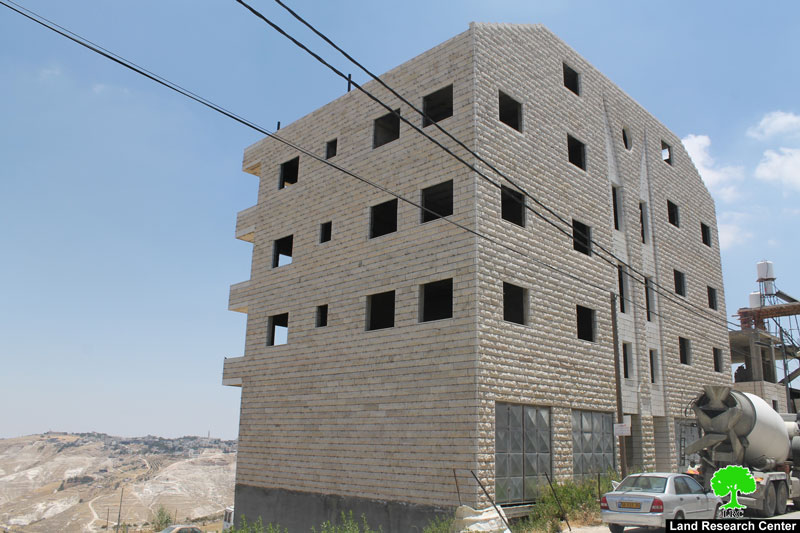Related
Israel to demolish Wad Al-Humus neighborhood in Sur Baher / Occupied Jerusalem
Calm clouded Wadi Al-Humus neighborhood, after the Israeli Supreme Court refused the residents’ petition regarding the army commander resolution to demolish the whole neighborhood. According to the court’s resolution, the owners should demolish their own buildings before 18 July 2019.
In 18 June 2019, the Supreme Court passed a resolution of demolishing several buildings that contain tens of apartments under security claims. The neighborhood has an area of 3000 dunums and inhabited by 6000 people.
Lawyer Haitham Al-Khatib told LRC reporter:
“The case goes back to 2003 when a segregation wall was built in the area, the plan of the wall showed that it will isolate the neighborhood from the village. Noteworthy, the neighborhood is classified in “A” area according to Oslo conventions . The town’s people filed an objection against the construction of the wall (as it will isolate the neighborhood ) , the objection was accepted and the new wall plan kept the neighborhood outside the borders of Jerusalem municipality and within Sur Baher village area.”
Al-Khatib asserted: In 2011, The army commander issued a military order that prohibits Palestinians from building on about 250 m at the both sides of the wall, for security claims. The segregation wall is actually a barbed siege, not a cement wall.
The military order became active only recently, and number of buildings received demolition orders , most of the buildings are in A area and licensed by the Palestinian ministry of local governance, except for 2 buildings in C area.
The Israeli supreme court refused the residents’ petition regarding the demolition, and said that the commander has the authority to issue demolition orders in A, B and C when it is necessary.
One of the affected citizens said that they won’t obey the court’s resolution and demolish their homes ,he also said: If the occupation forces want to demolish our homes they must do it on their own , the commander claims that the barbed siege is a gate for “terrorists” to enter Jerusalem , if that is the case why didn’t they build a cement wall?! Is demolishing our apartments will solve the problem of Palestinians who sneak into Jerusalem through the siege? It is obvious that their only intention is to demolish our homes , and leave us homeless.
The following table shows information about the targeted structures:
| # | name | Status of the building | Demolition Partial/total | Area m2 | Apartments # | Floors # | members | children | inhabited | Area according to Oslo accords |
| 1 | Ismael Ibediya | All set | Total | 500 | 2 | 2 | 8 | 6 | Yes | A |
| 2 | Mohammad Abu Teir | Under construction | Partial (7 floors) | 4700 | 40 | 9 | --- | --- | No | A |
| 3 | Ghalib Abu Hudwan | All set | total | 840 | 2 | 2 | 10 | 6 | yes | A |
| 4 | Alaa ‘Umaira | Under construction | total | 200 | 4 | 2 | 8 | 6 | No | A |
| 5 | Mohammad Al-Atrash | Under construction | Partial (2 floors) | 600 | 4 | 4 | --- | --- | No | A |
| 6 | Ali Hamadeh | Under construction | Partial (2 floors) | 800 | 4 | 6 | --- | --- | No | A |
| 7 | Bilal Al-Kiswani | All set | Total | 800 | 4 | 2 |
|
| yes | C |
| 8 | Ashraf Hamoud | Under construction | Total | --- | 2 | 2 | --- | --- | no | A |
| 9 | Mohammad Dabesh | He used the land as a place for containers, the military order requested removing them | total | --- | ---
| --- | --- | --- |
| C |
| 10 | Adnan Hamadeh | Foundations of a building | Total | --- | --- | --- | --- | --- | no | A |
| 11 | Ja’afar Abu Hamid | One floor baton building- used as a barn | total | --- | --- | --- | --- | --- |
| A |
| Total | 8440 | 62 | 29 | 26 | 18 |
|
| |||
Source: firsthand field observation- Israeli violations monitoring section- LRC, June 2019
|
| |
Sur Baher village[1]:
3 km south Jerusalem city, Sur Baher is bordered by Al-Sawahira Al-Gharbiyya, Jabal Al-Mukabir (North), The Green Line “the occupied territories of 1948” (west) , Ash-Shaikh Sa’ad village (east), and on the south there is Beit Sahour and Umm Tuba (who is also bordered by “Har Homa” settlement built on confiscated lands from Abu Ghnaim mount in Beit Sahour).
Sur Baher and Um Tuba together have a population of 18,137 people in 2011 census “The Jerusalem Institute for Israeli studies 2012”.
The town’s population come from several families: Duyat, Dabesh, Nemr, Eleyan, Hamada, 'Amaira, Abu Kufur, Bukairat, Jbour, Jad Allah, Abu Jamid , Al Atrash.
Sur Baher has a total area of 6,894 dunums , of which 2,076 dunums are the town’s built up area, it is in the borders of the occupation’s municipality in Jerusalem, after they illegally annexed it in 1967.
The occupation confiscated (1517) dunums from Sur Baher for the following purposes:
Talpiot settlement, which was established in 1973 devoured 1291 dunums , and inhabited by 12,591 people.
The segregation wall (2,260 m long) devoured 226 dunums, and blocked 6,033 dunums (west) and 861 dunums (east).
Oslo accords divided Sur Baher as the following:
A area (764) dunums.
B area (134) dunums.
C area (5,995 ) dunums.
Legal Feedback:
- Article 147 of Geneva fourth convention : extensive destruction and appropriation of property, not justified by military necessity and carried out unlawfully and wantonly. ( it is considered a serious violation of the convention)
- Article 53 of Geneva fourth convention that forbids destroying properties : Any destruction by the Occupying Power of real or personal property belonging individually or collectively to private persons, or to the State, or to other public authorities, or to social or co-operative organizations, is prohibited, except where such destruction is rendered absolutely necessary by military operations.
- Article 33 of Geneva fourth convention: No protected person may be punished for an offence he or she has not personally committed.
- Article 32 of Hague convention 1907 part g: To destroy or seize the enemy's property, unless such destruction or seizure be imperatively demanded by the necessities of war.
- Article 17 of Universal declaration of human rights 10 –Dec- 1948: No one shall be arbitrarily deprived of his property.










